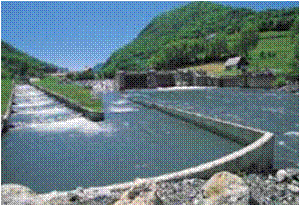GEPREDO
2007-2008


OBJECTIVES

SUMMARY
To achieve the objectives, 7 working meetings were held: Tarbes (3), San Sebastián (2), Terrassa (1), and Zaragoza (1). The project lasted 2 years and resulted in 10 publications in international journals, 13 conference presentations, 2 book chapters, and 1 doctoral thesis.
In connection with the Zaragoza International Water Expo, an open meeting was organized to present the results of the CTP project. In addition to the participating institutions, members from the University of Zaragoza and the Ebro River Basin Authority attended. This meeting allowed for deeper mutual understanding of the experiences of different participants and served as a foundation to program a new joint research project between the CTP GEPREDO institutions and two new institutions from the Aragón region.
Notable Publications
Charbonnaud P, Quevedo J, Hurand P, Troyas X, (2007), Validation and correction of data, resource optimization, and supervision of hydrographic networks, Houille Blance-Revue Internationale de l'Eau; ISSN 0018-6368, Volume: 1, 1st Quarter, pages 78-85, France. <DOI: 10.1051/lhb:2007011>
C. Ocampo-Martínez, A. Ingimundarson, V. Puig, and J. Quevedo. Objective prioritization using lexicographic minimizers for MPC of sewer networks. IEEE Transactions on Control Systems Technology, 16(1):113-121, January 2008. <10.1109/TCST.2007.899741>
C. Ocampo-Martínez, P. Guerra, V. Puig and J. Quevedo, (2007), Actuator fault-tolerance evaluation of linear constrained model predictive control using zonotope-based set computations, Journal of Systems & Control Engineering, 221(6):915-926. <DOI: 10.1243/09596518JSCE340>
Puig V, Witczak M, Nejjari F, Quevedo J, Korbicz J, (2007), A GMDH neural network-based approach to passive robust fault detection using a constraint satisfaction backward test, Engineering Application of Artificial Intelligence, vol. 20(7), pp. 886-897. <http://dx.doi.org/10.1016/j.engappai.2006.12.005>
Sarrate, R.; Aguilar, J.; Nejjari, F. (2007), Event-based Process Monitoring, Engineering Applications of Artificial Intelligence. Vol. 20(8), pp. 1152-1162. <http://dx.doi.org/10.1016/j.engappai.2007.02.008>
Puig, V.; Saludes, J.; Quevedo, J. (2008), Simulation of discrete linear time-invariant fuzzy dynamic systems, Fuzzy Sets and Systems, Vol. 159(7), pp. 787-803. <http://dx.doi.org/10.1016/j.fss.2007.11.009>
Sánchez Peña R., Bolea Y., Puig V. (2009), MIMO Smith Predictor: Global and Structured Robust performance Analysis, Journal of Process Control, Vol. 19(1), pp. 163-177. <http://dx.doi.org/10.1016/j.jprocont.2007.12.004>
With the support of:

Share: